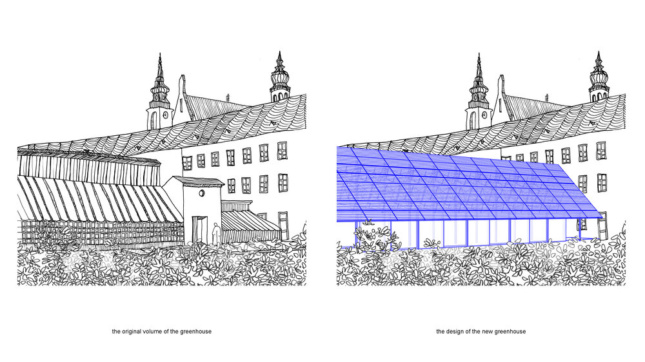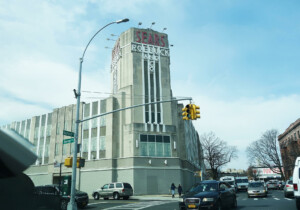Prague-headquartered architecture and urban design studio CHYBIK + KRISTOF has unveiled plans to resurrect a historically significant yet long-forgotten greenhouse on the grounds of the 14th-century Augustinian Abbey at St. Thomas Church in the Czech city of Brno.
The original greenhouse, which was destroyed by a storm in the 1870s that left only the foundations intact, was where the church’s green-thumbed abbot Gregor Mendel famously tinkered around with pea plants. Mendel’s history-altering experimentation, which involved cross-breeding different types of peas to achieve different desired traits, gave way to the birth of modern genetics and the rules of heredity. A devout priest in the then-Austro-Hungarian Empire studiously cultivating and breeding peas in an abbey greenhouse over an eight-year span (1856 through 1863) didn’t have an earth-shattering impact at the time.
However, after Mendel’s death in 1884, his published experimental findings on plant hybridization gained widespread recognition within Europe’s scientific community. Several years into the 20th century, the humble Augustinian friar-cum-scientist, who also extensively studied apiculture and meteorology, was finally recognized posthumously as the father of modern genetic science.
Located in the middle of Brno’s historic old city, the Augustinian Abbey of St. Thomas has long celebrated its somewhat surprising role in modern science. The Mendel Museum, an institution of Masaryk University in Brno, opened in 2007 and is a popular draw among visitors. To commemorate Mendel’s upcoming 200th birthday in 2022, a reimagined 21st-century version of the long-lost greenhouse will once again monastery grounds.

Tapping into archival materials of the site and directly influenced by Mendel’s own work, CHYBIK + KRISTOF’s structure, surrounded by the monastery’s lush gardens, will stand on the original foundations of the greenhouse—not an exact replica but a considerate design that’s “reminiscent” of the 19th-century building.
As the architects described in a press statement:
“Integrated in the structure and left visible, the preserved foundations are at the basis of the architects’ reinterpretation – echoing the orientation, shape and distinct roof of the greenhouse. While the trapezoidal volume is identical to the original edifice, the reimagined supporting steel structure seeks inspiration from Mendel’s three laws of inheritance – and the drawings of his resulting heredity system. Likewise, the pitched roof, consisting of a vast outer glass surface, reflects his law of segregation and the distribution of inherited traits, and is complemented by a set of modular shades.”
While sheltered, the greenhouse will have fully open sidewalls to avoid visual barriers. Beneath the structure, buried underground, will be an innovative heat pump system. Adjustable, integrated blinds will help to promote natural ventilation and shading during sweltering Czech summers.
Versatility is key as the greenhouse will serve a variety of purposes as a sort of garden pavilion and highly scenic venue for pop-up exhibitions, lectures, conferences, small concerts, and the like.
“The concept of the redesigned greenhouse is deeply rooted in the work of Gregor Mendel,” said Ondřej Chybík, founding partner of CHYBIK + KRISTOF. “The nodes and branches constituting the steel supportive framing are in direct dialogue with his laws of inheritance, in particular that of hereditary segregation. Building on this notion as well as Mendel’s original drawings, the resulting, highly complex structure pays homage to his legacy. Laid bare by the transparency of the glass roof, the edifice both embodies and exposes his undeniable contribution to modern science.”











